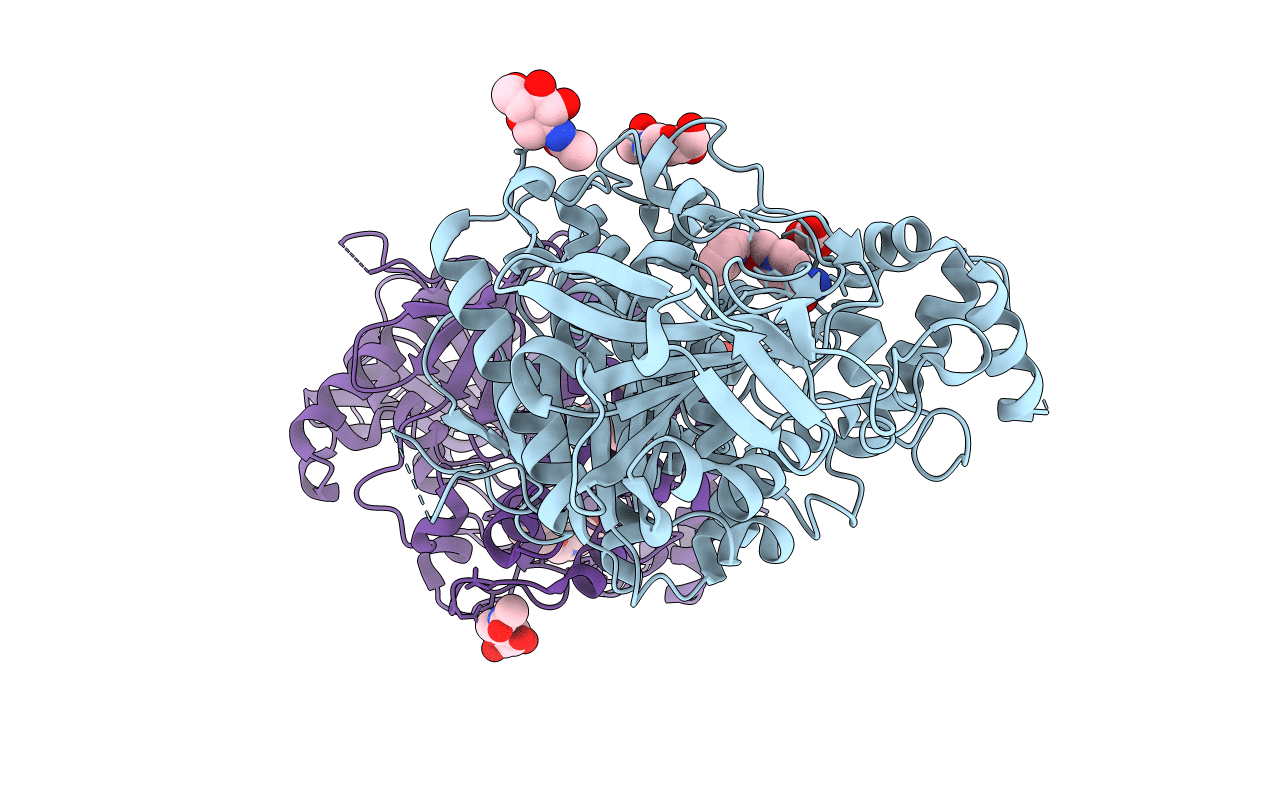
Deposition Date
2009-05-06
Release Date
2009-06-30
Last Version Date
2023-12-13
Entry Detail
PDB ID:
2WHP
Keywords:
Title:
Crystal structure of acetylcholinesterase, phosphonylated by sarin and in complex with HI-6
Biological Source:
Source Organism:
MUS MUSCULUS (Taxon ID: 10090)
Host Organism:
Method Details:
Experimental Method:
Resolution:
2.20 Å
R-Value Free:
0.21
R-Value Work:
0.17
R-Value Observed:
0.17
Space Group:
P 21 21 21


